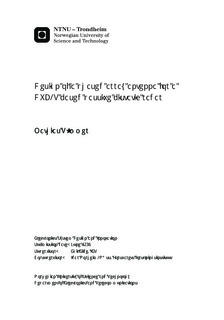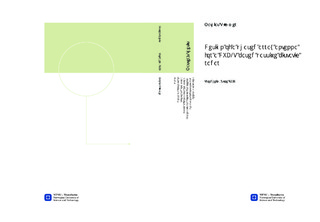| dc.description.abstract | This thesis was initiated by the Norwegian Defence Research Establishment's military air surveillance project on passive radar systems. The main objective of the thesis is the design of a phased array antenna for a DVB-T based passive bistatic radar.\\Design specifications for this array has been derived based on the radar's required sectoral coverage available DVB-T transmitters in the vicinity of the Oslo fjord. An 11 element horizontal linear array with dual polarized elements was found suitable for the application, where the bandwidth of the array should at least cover 622 MHz to 726 MHz, corresponding to DVB-T channels 40-52.\\\noindent A crossed bowtie antenna was found suitable as an array element and modelling and simulations were done using CST Microwave Studio. The resulting simulated bandwidth was from 624 MHz to 748 MHz for the horizontally polarized elements and 600 MHz to 800 MHz for the vertically polarized elements with an input reflection coefficient below -10 dB. In terms of radiation patterns, the center element of the array showed a half-power beamwidth in the horizontal plane of $122^{\circ}$ and $130^{\circ}$ for the horizontally and vertically polarized elements respectively. In the vertical plane the corresponding beamwidths was $120^{\circ}$ and $88^{\circ}$. When the array was scanned, the grating-lobe free scan range was $\theta_s = \pm 50^{\circ}$ at the highest operating frequency of 750 MHz, where the active reflection coefficient at the center element was lower than -7dB throughout the whole band when scanned to this angle.\\\noindent In order to verify the results from simulations in CST, a 5-element prototype array was produced with the objective of comparing simulations on a 5-element array in CST with those obtained from the prototype. The hypothesis was that if the measured performance on the prototype array was within acceptable limits of the simulated results, then one can presume that a full 11 element array will perform according to the simulation results given above. The center element of the 5-element array showed almost identical performance in terms of radiation patterns for both horizontal and vertical polarization, however with a higher level of cross polarization. A shift in center frequency of 30 MHz was found in measurements and it was found that this most likely stems from the fact that the quarter-wave balun used in the prototype, was not included in CST simulations. Apart from this, the measurements on the prototype array suggests that the CST simulations on the full 11 element array are valid, thus serving as a motivational factor to build a full 11 element prototype and characterize it through measurements.\\\noindent To summarize, the designed phased array antenna could potentially used as a sensor for a DVB-T based passive bistatic radar, covering channels 40-55 with a horizontal plane scan range of $\pm 50^{\circ}$. For future work it is recommended that the issue related to the frequency shift is sorted out and another row of elements in the vertical plane should be considered to further reduce the beamwidth in this plane. | nb_NO |

